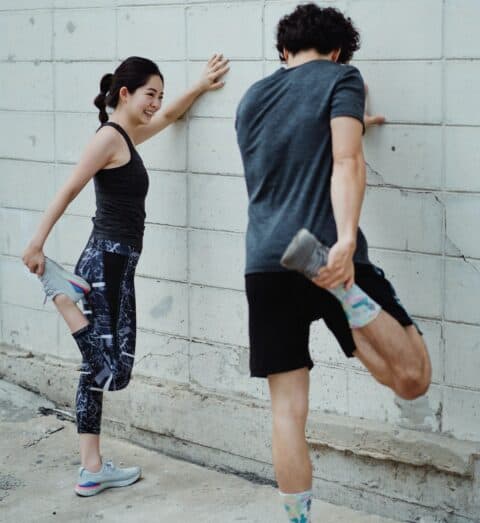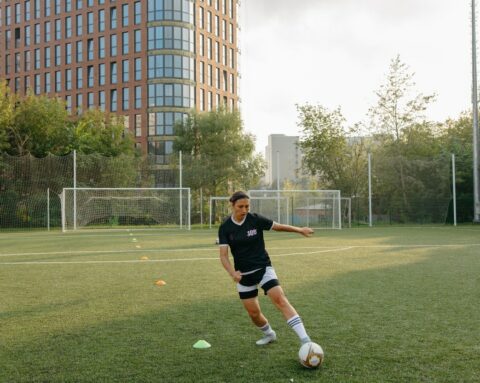Our health and wellbeing are in many ways defined by our patterns of sleep. Just as our body regulates our daily drinking, breathing and eating habits, the same is true for sleep. If you are getting enough high-quality sleep at the right times it can be as beneficial or more so than having a good diet and drinking enough water. If you are underslept your brain may be unable to concentrate, learn new things or respond quickly to actions.
Bizarrely enough, whilst everyone needs sleep, its biological purpose is to this day unknown. We do, however, understand from research that poor sleeping quality or a chronic lack of sleep greatly increases the risk of diabetes, obesity, cardiovascular disease and blood pressure. Whilst we sleep, our brain is still working hard and maintaining our bodies for the next day! During our sleep cycle, the brain removes toxins that build up during the day.
The following is an excerpt from the National Institute of Neurological Disorders and Stroke to explain the in-depth anatomy of the brain during sleep:
“The hypothalamus, a peanut-sized structure deep inside the brain, contains groups of nerve cells that act as control centres affecting sleep and arousal. Within the hypothalamus is the suprachiasmatic nucleus (SCN) – clusters of thousands of cells that receive information about light exposure directly from the eyes and control your behavioural rhythm. Some people with damage to the SCN sleep erratically throughout the day because they are not able to match their circadian rhythms with the light-dark cycle. Most blind people maintain some ability to sense light and are able to modify their sleep/wake cycle.
The brain stem, at the base of the brain, communicates with the hypothalamus to control the transitions between wake and sleep. (The brain stem includes structures called the pons, medulla, and midbrain.) Sleep-promoting cells within the hypothalamus and the brain stem produce a brain chemical called GABA, which acts to reduce the activity of arousal centres in the hypothalamus and the brain stem. The brain stem (especially the pons and medulla) also plays a special role in REM sleep; it sends signals to relax muscles essential for body posture and limb movements so that we don’t act out our dreams.
The thalamus acts as a relay for information from the senses to the cerebral cortex (the covering of the brain that interprets and processes information from short- to long-term memory). During most stages of sleep, the thalamus becomes quiet, letting you tune out the external world. But during REM sleep, the thalamus is active, sending the cortex images, sounds, and other sensations that fill our dreams.
The pineal gland, located within the brain’s two hemispheres, receives signals from the SCN and increases the production of the hormone melatonin, which helps put you to sleep once the lights go down. People who have lost their sight and cannot coordinate their natural wake-sleep cycle using natural light can stabilize their sleep patterns by taking small amounts of melatonin at the same time each day. Scientists believe that peaks and valleys of melatonin over time are important for matching the body’s circadian rhythm to the external cycle of light and darkness.
The basal forebrain, near the front and bottom of the brain, also promotes sleep and wakefulness, while part of the midbrain acts as an arousal system. Release of adenosine (a chemical by-product of cellular energy consumption) from cells in the basal forebrain and probably other regions supports your sleep drive. Caffeine counteracts sleepiness by blocking the actions of adenosine. The amygdala, an almond-shaped structure involved in processing emotions, becomes increasingly active during REM sleep. “
Now that we have a greater understanding of the anatomy of the brain during sleep, it is important to delve further into the sleep cycle itself. There are four stages of sleep known as Non-REM (stage 1, 2 and 3) as well as REM sleep. REM is defined as rapid eye movement sleep which usually occurs in the first 90 minutes of the sleep cycle and can occur several times during the night.
The body goes through each stage of the Non-REM cycle before entering the Rem cycle with each stage lasting for around 5-15 minutes. In the first stage of the Non-REM cycle, the individual is in a state of being in between sleep and being awake. The second stage is defined by your body temperature and heart rate dropping as deeper sleep hits. In the third and fourth stages, the individual is experiencing a state of restorative and deep sleep where the muscles will relax, the body repairs and grows tissues and supply of blood to the muscles is increased.
In the REM stage of sleeping our breathing may be irregular and fast, our brain is nearly as active as it is when we are awake, and we are able to consolidate memories from the day. The REM sleeping stage usually lasts for 10 minutes and each time it occurs it gets progressively longer. If we do not enter the REM stage of sleeping (such as if alcohol is consumed) we are at danger of effecting our memories as well as not remembering the things we have been taught during the day.
The next thing we must do is to understand how much sleep is generally needed in each age group. These numbers, whilst fairly accurate are a guide only and it will differ on an individual basis.
Age:
- 0-3 Months: 14-17 hours of sleep per day
- 4-11 Months: 12-15 hours of sleep per day
- 1-2 Years: 11-14 hours per day
- 3-5 Years: 10-13 hours per day
- 6-13 Years: 9-11 hours per day
- 14-17 Years: 8-10 hours per day
- 18-65 Years: 7-9 hours per day
- 65+ years: 7-8 hours per day
If you still feel tired during the day even after getting an appropriate amount of sleep, many experts will tell you that you should be getting more sleep. Alternatively, consider trying acupuncture to assist with your sleeping habits.
One of the most common myths associated with sleep is that your body will recover the lost sleep over time. This is very dangerous, false and is known as sleep debt. Just like with your money at the bank, the bank will not slowly pay off your debt for you. Your body will continue to run at lower efficiency until further consequences arise. The only way to pay back your sleep debt is to…. You guessed it, get more sleep! Whilst it is true our body won’t recover the sleep by itself, our bodies can adjust to a sleep cycle that utilises fewer sleeping hours; however, it will never be able to perform to maximum capabilities.
There are many dangerous consequences associated with sleep deprivation. These include but are not limited to; increased perception of pain, your immune system not coping as well as it should, depression and memory problems. In fact, people who are sleep deprived have been tested in driving simulations and have been seen to perform as badly as people who are intoxicated.
On the flip side, people who get an appropriate amount of sleep are scientifically proven to be less likely to become overweight and are known to consume fewer calories on a daily basis. This is likely linked to the added motivation and concentration abilities associated with high-quality sleep. High quality sleep does not only assist with peak athleticism, but it also improves concentration and productivity. Greatly enhanced memory performance, as well as improved problem-solving skills, are just two of the benefits you can expect from sleep. There are many other benefits we could list here, however, our favourite benefit is the increase in strength of your immune system. One study found that people who slept for less than 7 hours a night were three times more likely to develop a cold!
If you have been experiencing poor quality sleep, one of the best solutions we can recommend is acupuncture! Our therapists at Studio Musculoskeletal are highly qualified in the acupuncture field and have studied many techniques that could improve your sleep. Chinese medicine recognises sleep alterations as obstruction of normal energy flow and acupuncture works to stimulate our bodies energy meridians to clear obstructed energy pathways.
But don’t just take our word for it, check out some of these do it yourself at home pressure points and see what effect they have at bedtime. The Shenmen is located at the base of the wrist on the side of the Ulnar. This point calms the mind and helps to reduce physical agitation. It helps to reduce fear, heart palpitations and stress; and is a very good point for those suffering from manic-depressive disorders. The Anmien is located in the depression behind the ear, just below the earlobe. This point is very important for promoting peaceful sleep because it anchors the mind. It is a very calming point and is particularly beneficial in treating restlessness, interrupted sleep, nightmares and excessive dreaming.
We highly recommend you give these pressure points a try before bed tonight and book a session in as soon as possible to truly take control of your sleep cycle!






